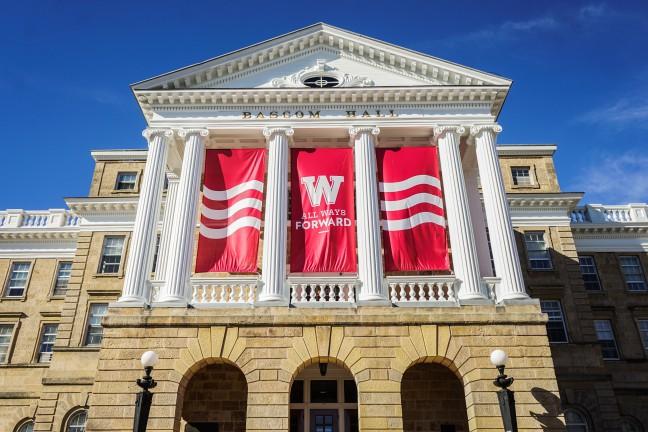University of Wisconsin’s “All Ways Forward” fundraising campaign hopes to get donors to make something happen on campus that wouldn’t happen otherwise, UW Chancellor Rebecca Blank said.
The last of the four comprehensive fundraisers of this kind, “Create the Future,” took place in 2006 and raised a total of $1.8 billion. “All Ways Forward” hopes to nearly double this amount by the end of the decade. The campaign aims to increase private support of the university in addition to the support from taxpayers, families and alumni donations gifts.
Gov. Scott Walker’s 2015-17 biennial budget slashed $250 million from the UW System over the next two years — one of the biggest cuts in the system’s history.
But in an interview with The Badger Herald, Blank said the new campaign was in its “quiet phase” for about two years, starting as soon as Blank came to UW.
Transcript: The Badger Herald sits down with Chancellor Rebecca Blank, Lori Berquam
But Blank said the fundraiser wouldn’t make up for the cuts — even though it aims to raise $3.2 billion by 2020 — since donors typically don’t want to give money for things that would be funded by the state. They want to donate to make something happen that wouldn’t otherwise, Blank said, and the “All Ways Forward” campaign looks to capitalize on this.
Blank said there’s “enormous synergy” between state funding and private fundraising. Private donors are more likely to give to a university getting more state funding, since there is more of a perception that that university is on the rise.
“In all of my experience with fundraising, nobody wants to give to a university whose funds are going downhill,” Blank said. “Everybody wants to be a part of a winner.”
Blank said if the state continues to pull away from the university in funding, she expects fundraising from private individuals will become more difficult.
UW isn’t alone in this fundraising technique. Dean of College of Letters and Science Karl Scholz said most universities have a period of concentrated fundraising in order to raise money for their institution.
“All Ways Forward” provides a time for the deans of colleges to think about what they need to continue to be successful, Scholz said. He said they also seek help from their most engaged alumni supporters to turn their ideas for the university into a reality.
“Every corner of the university will be affected if and when we are successful,” Scholz said. “This four-way partnership is critical to great institutions like ours, and the campaign we are embarking on is a great way to ask our alumni to participate.”
The university runs on four sources of revenue, and the private funds are important for paying for what the state budget does not include, such as financial aid for students. UW Foundation Spokesperson Vince Sweeney said state money also goes towards building projects and upkeep of the university.
The university’s fundraising will be put towards four primary areas. Funds will go to faculty support so the university can keep attracting new members while maintaining the faculty they already have. Scholz said research will continue to be enhanced and supported on campus, as well. Funds will also be dedicated to student support, such as financial aid and the student experience, which will improve facilities on campus, like RecSports developments.
Scholz said the fundraiser is necessary to continue higher education provided by the partnership between the state of Wisconsin and the federal government that supports research. Scholz said other contributors are tuition-paying students and families in addition to alumni who offer support through their philanthropy.
Gifts given to the university from private donors cannot be spent the same way other forms of revenue can be, Sweeney said, but they are often intended for specific programs. Many are in the form of endowments that are given out as a small percentage of the whole donation every year.
“I think the way to look at private fundraising is it is the margins of excellence,” Sweeney said. “It provides the university an opportunity to do something beyond what the other three revenue sources might be able to do.”














